#amphitheatre
Explore tagged Tumblr posts
Text
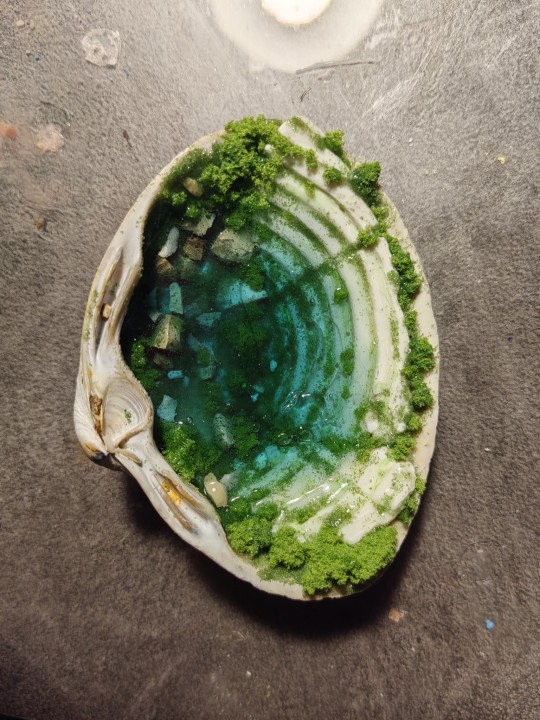
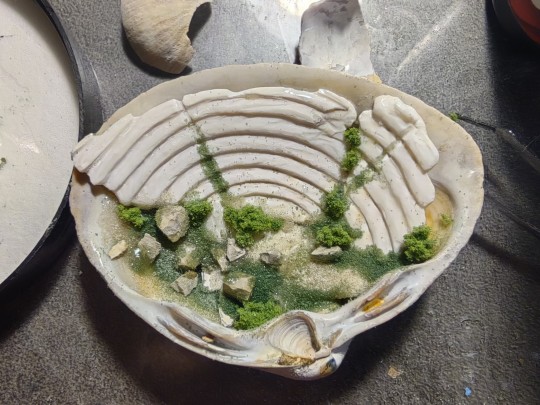
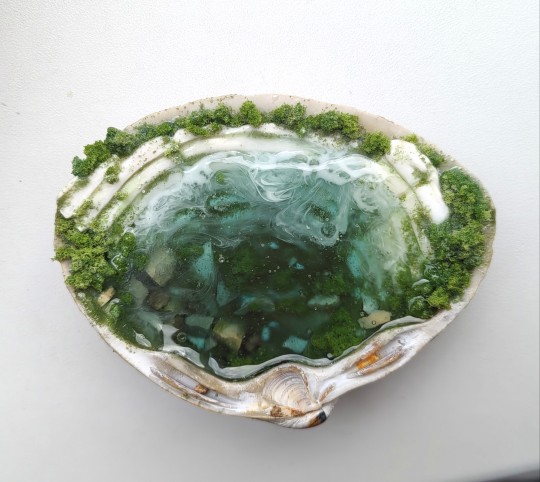
A new scene, flooded ruins of amphitheatre. Eh, overdid it with the waves. Carved shell fragments, stone, quartz sand and resin in a spisula shell.
#amphitheatre#arena#ancient greek#ancient rome#ruins#sea shells#sea#flooded#underwater#ancient ruins#epoxy resin art#resin#miniature#diorama#miniature sculpture#carving#beach combing#spisula#my art#art#seascape#amphitheater
5K notes
·
View notes
Text
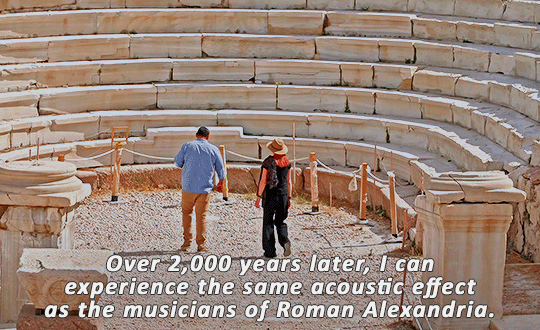



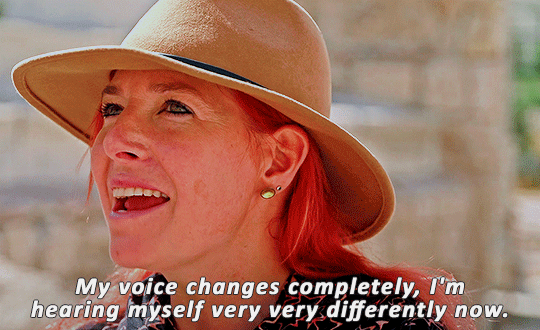
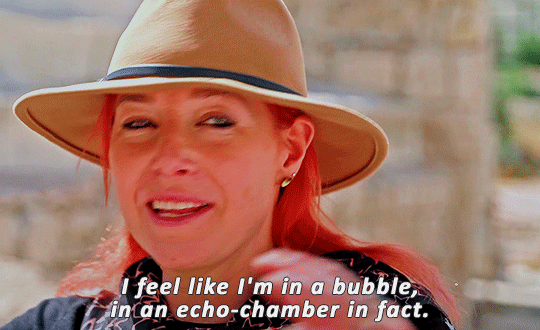
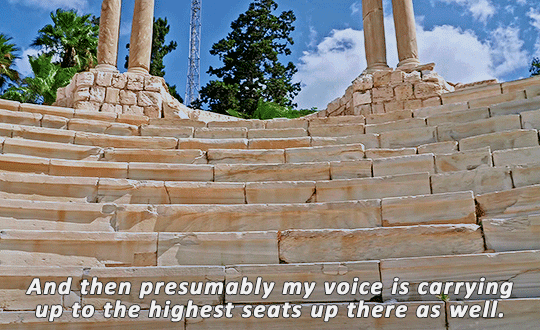
ANCIENT EGYPT BY TRAIN (2023) — 1.01 Alexandria
#egypt#ancient egypt#egyptology#archaeology#historyedit#mine#my edit#documentary#doc: ancient egypt by train#alice roberts#2023#alexandria#roman egypt#amphitheatre
446 notes
·
View notes
Text





Caerleon Roman Amphitheatre, Caerleon, Wales
#romans#roman empire#roman#amphitheatre#gladiators#entertainment#ancient living#ancient design#ancient cultures#roman buildings#roman fort#roman society#Wales#Caerleon#archaeology#landscape#outdoors#combat#games
94 notes
·
View notes
Text

Colosseum, Rome, Italy: The Colosseum is an elliptical amphitheatre in the centre of the city of Rome, Italy, just east of the Roman Forum. It is the largest ancient amphitheatre ever built, and is still the largest standing amphitheatre in the world, despite its age. Wikipedia
159 notes
·
View notes
Photo
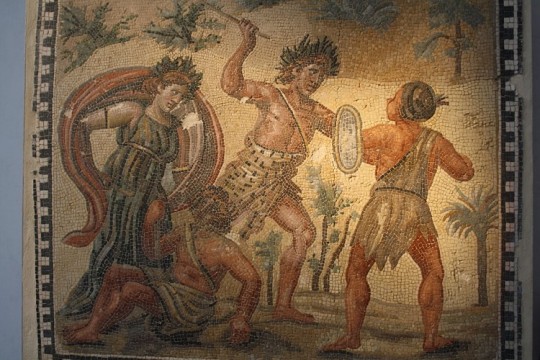
Roman Games, Chariot Races & Spectacle
If there was one thing the Roman people loved it was spectacle and the opportunity of escapism offered by weird and wonderful public shows which assaulted the senses and ratcheted up the emotions. Roman rulers knew this well and so to increase their popularity and prestige with the people they put on lavish and spectacular shows in purpose-built venues across the empire. Such famous venues as the Colosseum and Circus Maximus of Rome would host events involving magnificent processions, exotic animals, gladiator battles, chariot races, executions and even mock naval battles.
Venues
It is significant that most of the best-preserved buildings from the Roman period are those which were dedicated to entertainment. Amphitheatres and circuses were built across the empire and even army camps had their own arena. The largest amphitheatre was the Colosseum with a capacity of at least 50,000 (likely more, if one factors in the smaller bodies and different sense of personal space compared to modern standards) whilst the Circus Maximus could hold a massive 250,000 spectators according to Pliny the Elder. With so many events on such a large scale, spectacles became a huge source of employment, from horse trainers to animal trappers, musicians to sand rakers.
From the end of the republic seats in the theatre, arena and circus were divided by class. Augustus established further rules so that slaves and free persons, children and adults, rich and poor, soldiers and civilians, single and married men were all seated separately, as were men from women. Naturally, the front row and more comfortable seats were reserved for the local senatorial class. Tickets were probably free to most forms of spectacle as organisers, whether city magistrates given the responsibility of providing public civic events, super-rich citizens or the emperors who would later monopolise control of spectacles, were all keen to display their generosity rather than use the events as a source of revenue.
Continue reading...
37 notes
·
View notes
Text

Amphitheatre of El Jem, Tunisia
French vintage postcard
#tarjeta#amphitheatre#postkaart#sepia#carte postale#ansichtskarte#briefkaart#tunisia#photo#photography#postal#postkarte#vintage#french#postcard#historic#ephemera#amphitheatre of el jem
39 notes
·
View notes
Text


Arena di Verona
The amphitheatre was built in 30 AD and is still in use for opera concerts. Originally, it was made of limestone from Valpolicella, but it was rebuilt after the earthquake of 1117.
#verona italy#amphitheater#amphitheatre#arena di verona#italia#photography#veneto#roman empire#ancient rome#archaeology#roman architecture#architecture#travel#travel photography#history#photographers on tumblr#culture#italy#ancient
22 notes
·
View notes
Text

Colosseum, Rome, Italy: The Colosseum is an elliptical amphitheatre in the centre of the city of Rome, Italy, just east of the Roman Forum. It is the largest ancient amphitheatre ever built, and is still the largest standing amphitheatre in the world, despite its age. Wikipedia
#Colosseum#Ellipse#Amphitheatre#Vespasian#Titus#AD 70–80; 1944 years ago#Regio III Isis et Serapis#Rome#Lazio#Italy#europe
123 notes
·
View notes
Text

Roman Amphitheatre, Verona, Italy (by Jarod Barton)
Enjoy our curated content? You can support us here.
#amphitheatre#roman#roman history#roman architecture#architecture#archaeology#verona#italy#europe#travel#wanderlust#explore#curators on tumblr#li_destinations
203 notes
·
View notes
Photo





La meglio gioventù / The Best of Youth Marco Tullio Giordana. 2003
Ruins Amphitheatre, Via Cassia, SP82, 01015 Sutri VT, Italy See in map
See in imdb
#marco tullio giordana#la meglio gioventù#the best of youth#alessio boni#sutri#italy#lazio#viterbo#amphitheatre#ruins#movie#cinema#film#location#google maps#street view#2003
19 notes
·
View notes
Text
The making of painted stones
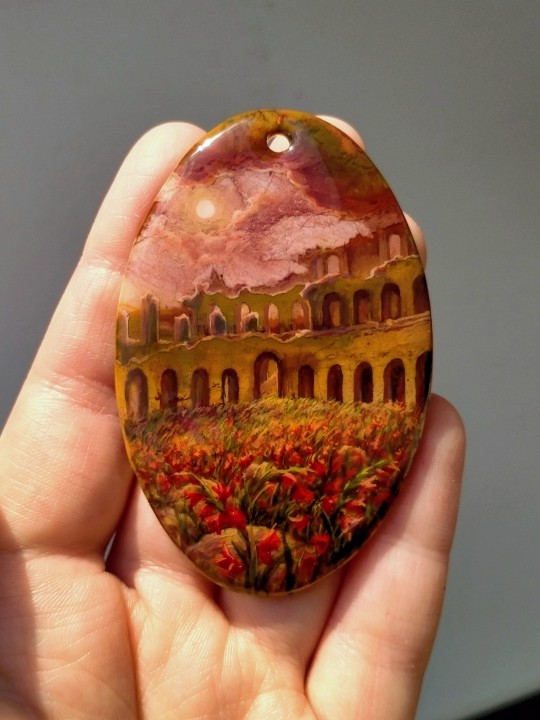
Well, a few times I was asked to show the process of miniature paintings on stones, and here is my first attempt to capture and explain it. Warning - I only have my phone's camera at my disposal, so the quality is not very good.
Firstly - an idea for the image. Every stone has something in its pattern that can be a starting point for developing an imagery. The stone I picked for this one is a beautiful Picasso jasper, and in this case I was looking for a stone for a specific idea I've already had in mind. Spontaneous improvisation dictated by the stone's pattern is also great but I decided to pick something more definitive for better illustrating the process.
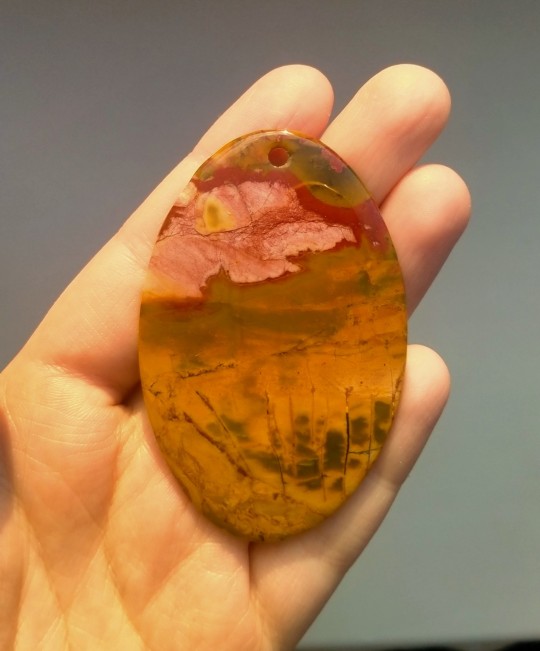
This jasper's pattern already has outlines that can be developed into a landscape without painting it over too much. I don't like it when stones are just mindlessly covered by slapping a random image on it, ignoring the colours, textures and patterns.
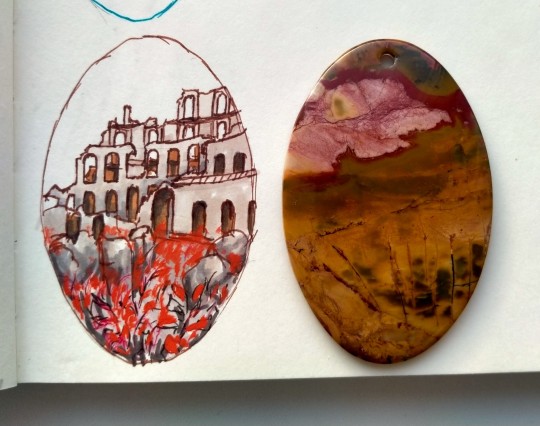
Here's the idea - ruins of an amphitheatre overgrown with red gladioluses. I know, I know, but I'm very interested in the initial mystical sacrificial background of gladiators. So here it is, arena covered in red, swords in the sand, but it's finally quiet.
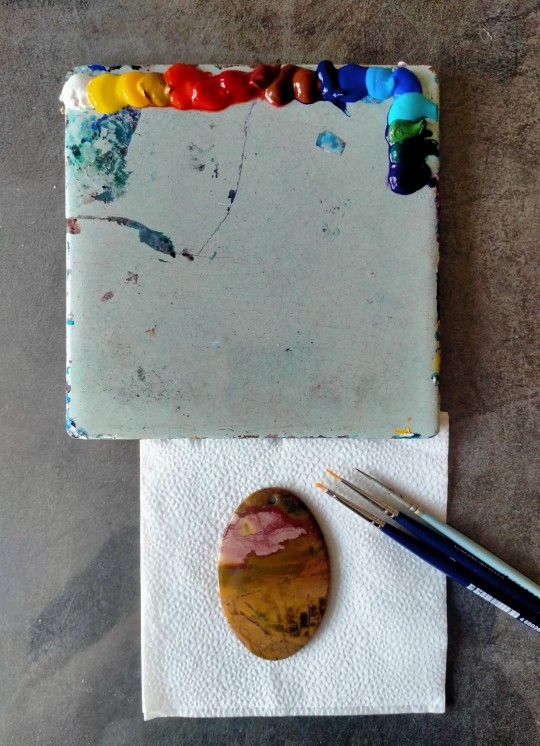
Before we start, a stone must be varnished - minerals are porous, and lacquer smoothes its surface. I paint with tempera - most artists who work in lacquer miniatures use oils, but tempera allows quicker process, which is important for me. I'm autistic and my executive dysfunction makes working with oils difficult - my sudden bursts of activity won't match with drying timings and such. So, tempera for me.
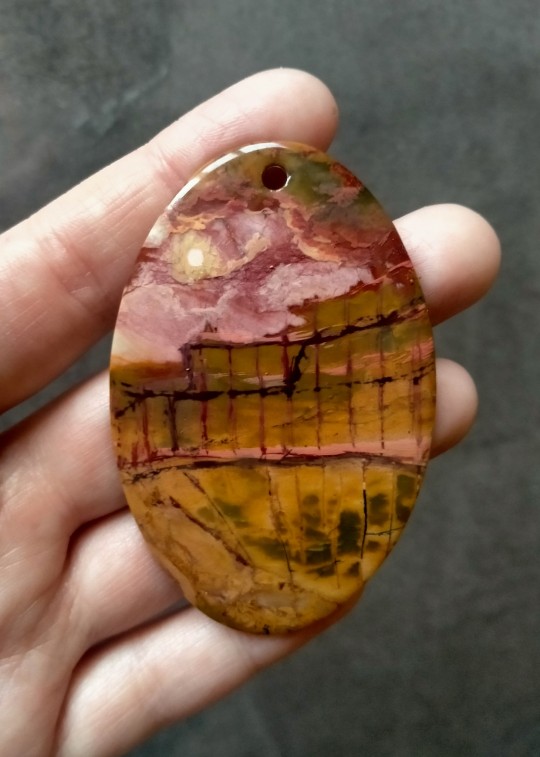
Starting with sketching the outlines of the ruins and painting our light source, the sun and red clouds. I'm trying to work with a palette that the stone already has and make the painting as harmonious as possible.

Erasing auxiliary lines as we continue.
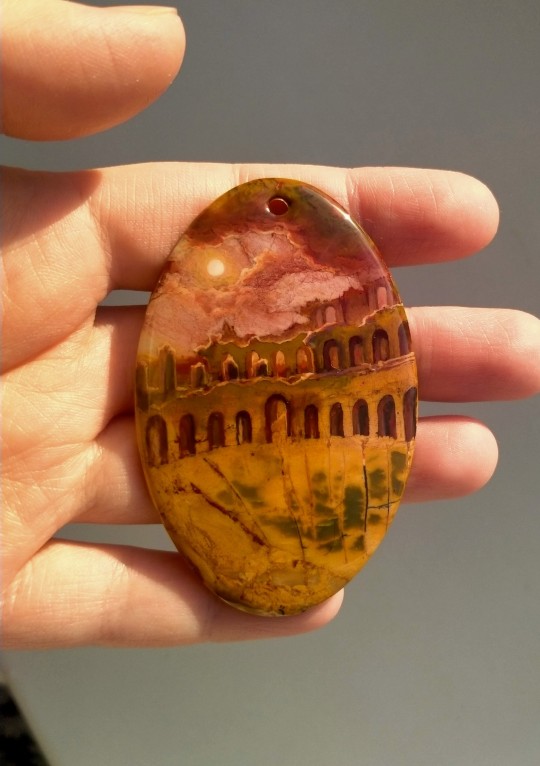
Done with the first layer - the walls and the sky. After the paint dries, I apply varnish (I use Novol clearcoat, car varnish - it's very durable). There can be as many layers as you need.
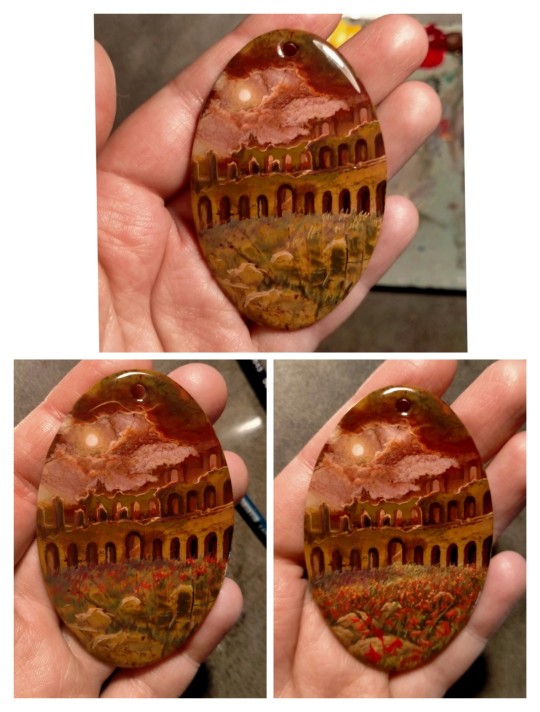
Now - the flowers and details.
After the painting is finished, it'll need several layers of varnish. And some fine sandpaper (1500) in-between the finishing layers for better grip.
And here it is! time to think abou a necklace for this one.
I'm not sure how useful I can be and what aspects you would like to know, so feel free to ask. I'm not sure I can make a good enough video with my current phone, so this'll have to wait. I tried to skip all the musings about ideas and finding stories, but whatever. And the time needed for work - I don't know. There was a month-long pause in the making of this one, due to a couple of emergencies that knocked me down for some time, and it's not easy for me in general due to my mental state - sometimes I can make a painting in two days, sometimes it takes years, nothing is certain with me, especially now. But well, here's what I do.
#miniature#painted stones#rock painting#painted rocks#minerals#picasso jasper#jasper#amphitheatre#arena#gladiators#gladiolus#gladioluses#flowers#ruins#roman ruins#ancient rome#sky#my art
860 notes
·
View notes
Text




ANCIENT EGYPT BY TRAIN (2023) — 1.01 Alexandria "The Roman Amphitheatre in Alexandria in Egypt is a large circular Roman theatre, and the only one of its kind to be found in the country. Though often referred to as an amphitheatre, the site is actually that of a small Roman theatre rather than a larger sporting arena." [x]
#egypt#ancient egypt#egyptology#archaeology#historyedit#mine#my edit#documentary#doc: ancient egypt by train#roman egypt#alice roberts#alexandria#amphitheatre#kom el deka#2023
270 notes
·
View notes
Text







Scale Model of Roman Chester, Grosvenor Museum, Chester
#romans#roman empire#roman#roman city#roman building#archaeology#architecture#ancient living#ancient cultures#Chester#amphitheatre#bridge#model#roman society
64 notes
·
View notes
Text

The Christian Martyrs' Last Prayer by Jean-Leon Gerome, 1883.
#classic art#painting#jean leon gerome#french artist#19th century#academicism#christian art#martyrs#people#lion#amphitheatre
26 notes
·
View notes
Photo

Mythological Re-Enactments in Ancient Roman Spectacle
To this day the ancient Romans remain infamous for their dramatic use of spectacle and other forms of entertainment. A lesser known variation of Roman spectacle is the mythological re-enactments that took place during the ludi meridiani (midday spectacle). These performances were not only re-enactments for entertainment's sake, but were also a very real form of execution. The unfortunate souls forced to re-enact the myths were primarily condemned criminals who had committed a capital offense, but they may also have been prisoners of war. Within the Roman world it was only the humiliores (people of lower status) and non-citizens who were condemned to die in such a way, as public executions were often performed in a manner that was considered degrading and humiliating. Kathleen M. Coleman suggests that non-citizens, along with lowly criminals, were entitled to the most degrading of penalties as a result of their lack of status within society. It was the intent of the individual responsible for condemning the criminals/prisoners to separate the condemned from society, both physically and emotionally, in order to prevent sympathy among the spectators. By humiliating the condemned, the spectators would experience a sort of shared moral superiority over the individual that had been sentenced to die.
Although it is difficult to determine the true motives behind the executions, it is probable that the emperor would hold such games as the ludi meridiani in order to control the population and allow the re-enactments to serve as an example of what may happen to the public if they, too, broke the law. Whether or not this was the case, and whether or not this was effective, remains unclear. It is clear, however, that such spectacles served a political purpose, and the inclusion of myth is no coincidence. As ancient Greek and Roman history was measured in terms of myths, myths were, in turn, incorporated into many aspects of daily life and spectacle within the ancient world, serving political, social, and religious purposes alike.
Primary sources of such events include Martial, a 1st century CE poet, and Clement of Alexandria, a 2nd-3rd century Christian theologian. Martial's work On the Spectacles describes the inaugural games of Titus in 80 CE and provides three accounts of mythological re-enactments. These include: Hercules, Orpheus, and Pasiphae.
HERCULES
It is likely that the Romans specifically chose the most popular myths and characters in order for the condemned to be readily identified, such as Hercules clad in a lion's skin clutching a club. The inevitable outcome of this re-enactment was crematio (cremation) as within the myth. The setting itself may differ from the myth, yet it is believed that the most common setting for the re-enactment of the Hercules myth would take place on the immolation pyre of Mount Ida. If not, then the re-enactment would simply include "Hercules" wearing the garment given to him by Deianira, which according to myth had been smeared with the centaur Nessus' blood. In reality, the tunic was doused in pitch in order to become more flammable. This tunic was given the name tunica molesta. In comparison to the original myth itself, this re-enactment is quite similar. The attributes of Hercules are generally the same, even the tunic given to him by Deianira. Most importantly, the outcome of the myth is still the same as well; "Hercules" dies by being burned alive one way or another.
Continue reading...
36 notes
·
View notes
